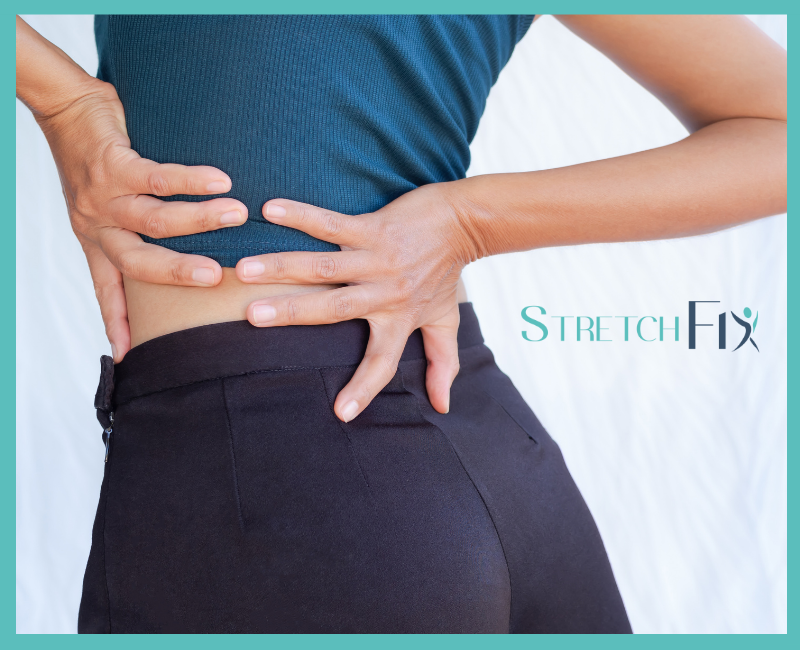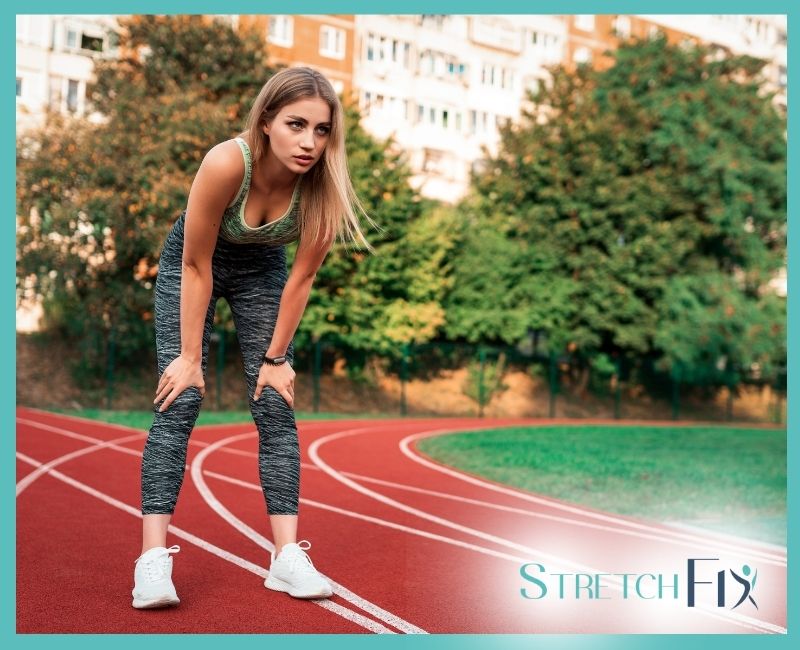Many women have menstrual cramps that impact their ability to function normally for several days a month — but you would rarely know it. Women are masters at disguising the monthly pain, discomfort, bloating, and cramps associated with their period. There are, fortunately, numerous methods of managing menstrual cramps for women; it is a matter of discovering what remedy works best for their circumstances. Here are some of the best positions to help promote ease and comfort during period cramps.
Periods can be a lot of things. For many, painful cramps are simply the norm.
This can impact your work life, social life, energy, mood, and even the quality of your sleep. If you’re someone who experiences pain, bloating, and a general feeling of blah during your period, you’re definitely not alone.
The good news is there are several steps you can take to relieve your symptoms so you can be virtually pain-free during your time of the month.
There are several positions for period cramps that promote relaxation, circulation, and alignment.
When sitting in a chair
Doctor of physical therapy Laurence Agénor specializes in orthopedics, pelvic health, and dance medicine. She recommends using a lumbar support pillow on your chair to decrease low-back pressure.
Keeping your spine as neutral as possible is key, according to Agénor. Ideally, your feet are firmly planted on the ground and your hips are aligned with your knees at 90 degrees while you’re sitting.
Movement breaks
Agénor also notes the importance of taking breaks to move throughout your day.
“Getting up to walk around or move for a few minutes on an hourly basis will help minimize stiffness and improve blood flow throughout the body,” she says.
Yoga positions to help period cramps
Heading to your yoga mat may not seem intuitive when your cramps are bothersome, but yoga can provide multiple benefits.
According to a 2017 review of fifteen studies, yoga can relieve premenstrual syndrome (PMS) symptoms, such as:
- bloating
- cramping
- breast tenderness
A 2011 studyTrusted Source found that yoga can reduce the severity and duration of primary dysmenorrhea (more on this below).
In addition to physical benefits, research from 2011Trusted Source shows yoga can relieve mental health symptoms. For example, it may help:
- reduce stress
- ease depression symptoms
- improve sleep patterns
- enhance overall quality of life
Agénor says gentle movement during your menstrual cycle improves the uterine and overall blood flow throughout the body, which relieves cramping.
“Getting your body moving aids in decreasing muscular tension throughout the body, which can help ease your discomfort during that time of the month,” she says.
Whether you’re a yogi or not, the below poses can be a wonderful way to soothe painful cramps.
Supported Savasana (supine position)
Benefits:
- relieves pain
- decompresses the lumbar spine (lower back)
- improves circulation
- supports rest and relaxation
To do this pose, lie on your back with a bolster underneath your legs. Agénor says this is the most pain-relieving position for period cramps. This helps decrease feelings of compression in the low back. In yoga, this is known as Supported Savasana.
Cobra
Benefits:
- strengthens the spine
- stretches the shoulders, chest, and abs
- opens the heart and lungs
To do this post, start flat on your stomach with your legs extended straight behind you. Then, place your hands underneath your shoulders and push up as you lift your head and shoulders off the mat.
Fish
Benefits:
- improves spinal flexibility
- stimulates the abdomen to relieve pain and cramps
- opens the lungs and encourages deep breathing
To do this pose, lie on your back with your legs straight. Press your forearms and elbows into the floor and begin to lift your chest off the floor. Tilt your head back, so the crown of your head is on the floor.
To modify this pose, you can place a pillow or block under your head and shoulders and let your arms fall to the side.
Cat-Cow
Benefits:
- improves spinal mobility
- decreases tension by encouraging rib expansion
- reduces lower back pain
- increases stability in your lumbopelvic region
To do this pose, get on your hands and knees. Agénor recommends a variation of this popular pose where you inhale as you arch your back and extend the spine (cat), then exhale as you draw the lower abdominals in towards the spine (cow).
Bridge
Benefits:
- improves spinal mobility
- stimulates lower abdomen
- improves posture
To do this pose, lie on your back with your knees bent and feet on the ground. Lift your hips toward the sky.
Agénor recommends rolling up vertebrae by vertebrae into a shoulder bridge. As you roll down, let each segment of the spine make contact one at a time with the floor.
Child’s Pose
Benefits:
- stretches lower back and spine
- increases blood circulation
- promotes relaxation
To do this pose, get on all fours and bring your big toes together as you widen your knees. Lean your upper body over your lower body as you stretch forward with your arms and take big, deep breaths.
Roll downs (Pilates)
Benefits:
- improves body and spinal mobility
- improves body alignment
- activates abdominal muscles
To do this pose, Agénor recommends starting with a deep inhale through the nose and exhaling out through the mouth. Tuck your chin to your chest, and roll down your spine, vertebrae by vertebrae.
“As you roll back up, you find a soft bend in the knees and feel each vertebrae stack one on top of the other, until your head is the last to come up,” she says.
Keep in mind that it’s important to listen to your body without pushing yourself. If a posture feels uncomfortable, Agénor recommends a smaller range of motion to help you feel more stable. You’ll still get the benefits.
Sleep is an essential recovery tool. However, it’s common to experience sleep disturbances during your period Trusted Source.
That’s because your hormone levels drop, causing your body temperature to rise. This can throw off your circadian rhythm.
On top of that, cramps may provide an extra layer of discomfort.
Finding a comfortable sleeping position can set you up for a good night’s rest. While Agénor says the ideal sleep position is personal, she advises maintaining neutral alignment of the spine.
Here’s what Agénor recommends for your go-to sleep position:
- Side sleepers. Keep a pillow under your neck that supports your natural cervical curvature. Placing a pillow between the thighs also helps maintain your pelvic alignment, which can provide pain relief.
- Back sleepers. Like side sleepers, keeping a pillow under your neck is essential for spinal support. Additionally, putting a pillow under the knees can help decrease low back pressure.
- Stomach sleepers. Sadly, sleeping on your stomach during your period can actually exacerbate pain in the lumbosacral region. If you can only fall asleep face down, try placing a pillow under your stomach and above the hip bones to ease low back discomfort when you wake up.
According to Alyssa Dweck, MD, FACOG, a top doctor in New York Magazine and Westchester Magazine, the fetal position may also provide comfort. She suspects this is due to muscle relaxation in the abdomen and the emotional comfort it may bring.
During your period, the uterus contracts to shed its lining. Hence: throbbing and achiness in your low belly.
“Cramps are primarily due to the release of prostaglandins by the uterus, resulting in muscle contractions,” Dweck says.
Prostaglandins are hormone-like chemicals made in the lining of the uterus that cause it to contract. The contractions help expel the uterus lining but can also trigger pain.
According to Dweck, this is due to blood vessels being compressed, causing a brief stop in blood flow.
That cramping pain right before or during your period has a name: primary dysmenorrhea. It’s one of the most common gynecologic disorders without another condition involved.
According to a 2016 studyTrusted Source, primary dysmenorrhea may be associated with:
- family history
- smoking
- long and heavy periods
- diet and lifestyle factors
- depression and anxiety
An older 2006 reviewTrusted Source showed that women with primary dysmenorrhea produce excess amounts of prostaglandins. Prostaglandin release is at its highest on the first day of your period or 1 to 3 days before your period.
When prostaglandins enter the bloodstream, they can increase the sensitivity of pain receptors. In addition to cramps, they may also cause:
Secondary dysmenorrhea may be another cause of period pain. Dweck says this is caused by an identifiable issue, like fibroids or endometriosis.
It’s always a good idea to talk with your doctor about your symptoms for a better understanding of their causes and how to manage them.
Another possible culprit of period discomfort, according to Dweck, is gastrointestinal motility changes that often go along with menstruation or PMS.
The hormone progesterone is secreted by the ovaries prior to menstruation. An older study from 1990Trusted Source linked progesterone to irritable bowel syndrome (IBS) symptoms that can cause cramping or pelvic pain.
What makes cramps better?
While there’s no one-size-fits-all method for relieving period cramps, there are several things you can do to prevent or ease your pain. Dweck recommends the following:
- Use a heating pad on your abdomen to stimulate blood flow and muscle relaxation.
- Take over-the-counter medications, such as ibuprofen and other nonsteroidal anti-inflammatory drugs (NSAIDs), to reduce the prostaglandin effect.
- Try exercising or having sex to reduce pain with the release of dopamine.
- Track your cycle to anticipate pain and plan accordingly.
Adopting healthy lifestyle habits can also keep your pain at bay.
A 2016 studyTrusted Source compared the lifestyles of young women with and without primary dysmenorrhea looking at:
- eating behavior
- stress
- physical activity
- social relationships
The researchers concluded that healthy lifestyle choices could minimize symptoms. These included:
- reducing salt intake
- reducing the consumption of animal fat
- increasing the intake of complex carbohydrates and fibers
- increasing physical activity
- reducing stressors
- receiving psychological support
The study also showed that eating foods, like fish, eggs, vegetables, and fruits, and reducing foods high in arachidonic acid (a type of omega 6 fatty acid), like meat and dairy, helped reduce dysmenorrhea severity. This was combined with brisk walking for 30 minutes a day for the first 3 days of menstruation.
Cycle syncing, or basing your self-care and lifestyle behaviors on where you’re at in your cycle, can also be an effective method for balancing your hormones to ease pain.
This may be especially true if you have polycystic ovarian syndrome (PCOS) or don’t feel like yourself during your period.
With diet, exercise, and lifestyle adjustments throughout each phase of your cycle, you can better support your body’s needs.
In addition to yoga, massage can also provide cramp relief.
An older 2005 studyTrusted Source concluded that abdominal meridian massage was an effective way to relieve dysmenorrhea. Another 2010 studyTrusted Source found massage therapy reduced pain caused by endometriosis.
Try it
You can take things into your own hands — literally — by employing a simple massage technique that targets the tenderness in the region above the pubic bone, known as the suprapubic region.
Agénor instructs her clients to perform self-myofascial release in this area.
To do this, take the pad of your fingers and apply gentle pressure for about 60 to 90 seconds to different areas of the front of the pelvis.
“If the pain dissipates with the pressure, you know you’re doing it right,” Agénor says.
In addition to proper positioning and massage, there are other things you can try to get cramp relief, including using special tools, eating certain foods and drinks, and trying natural remedies.
Tools and equipment
Period pain can range from mild to excruciating, so staying prepared can help you combat your symptoms early on.
Here are a few things to keep handy for cramp relief:
- heated pads
- hot water bottle
- essential oils: lavender, peppermint, rose, and fennel oils can be added to a carrier oil and massaged into affected areas to reduce pain
While research suggests there are health benefits, the Food and Drug Administration (FDA) doesn’t monitor or regulate the purity or quality of essential oils. It’s important to talk with a healthcare professional before you begin using essential oils and be sure to research the quality of a brand’s products. Always do a patch test before trying a new essential oil and dilute any essential oil with a carrier oil so it doesn’t burn your skin.
Food and drink to relieve menstrual cramps
Maintaining a healthy diet can lessen the severity of menstrual pain. Generally, eating foods that are high in fiber and plants and removing high-processed foods is a good rule of thumb to follow.
In fact, following this diet can reduce estrogen levels, which can cause painful periods.
Some foods to eat on your period include:
- whole grains — like brown rice, oatmeal, and flaxseeds — to provide fiber and vitamin B
- fruits — like papaya, watermelon, celery, mangoes, and berries — to provide hydration and curb sugar cravings
- nuts and seeds — like walnuts, almonds, and pumpkin seeds — to help reduce inflammation
- legumes — like lentils and chickpeas — that contain protein and zinc
- vegetables — like broccoli, Brussels sprouts, and spinach — that are rich in essential nutrients
- chicken and fish that are high in iron and protein
Drinking plenty of water is important, too. Not only does it reduce your chances of getting dehydration headaches, but it can also stop you from retaining water and bloating.
Meanwhile, some foods can exacerbate symptoms and increase prostaglandins in your body, which worsens pain. Some things to avoid if you can are:
- refined grains, like white bread, pastries, and cereals
- foods high in saturated fat
- foods high in sodium
- alcohol
- caffeine
Natural remedies for period cramps
There are a number of home remedies that may help with period cramps.
Herbal medicine can help alleviate cramps with natural anti-inflammatory compounds. Some soothing remedies include:
- ginger tea
- chamomile
- cramp bark
- hot water with lemon
- turmeric or curcumin
Ginger is commonly used for healing. It also blocks prostaglandins from forming, according to researchTrusted Source.
Additionally, research from 2015 found that curcumin, a natural compound in turmeric, can significantly reduce PMS symptoms.
If you feel like you’ve tried every solution, and you’re still experiencing pain, there are a few different pain relievers you can try.
It’s also OK to take over-the-counter medications, such as ibuprofen and NSAIDs. These anti-inflammatory medications, when taken at the correct dosage, can significantly reduce pain and menstrual flow.
However, it’s always a good idea to speak with your doctor if you’re consistently relying on NSAIDs to ease cramps.

Along with these positions, stretching is an effective method of promoting circulation, relaxing, and finding comfort during those days when period pain feels like it will never go away! Unsure of what stretches would be most effective? You do not need to worry about that when you visit the Stretch Experts at StretchFix. StretchFix is a form of assisted stretching that elevates and enhances the benefits of stretching solo. Let StretchFix help you manage your pain and discomfort successfully! Experience the StretchFix difference! Call today at (949)-276-5401 or join our IG community here!
Reference: [https://www.healthline.com/health/positions-to-help-period-cramps]









